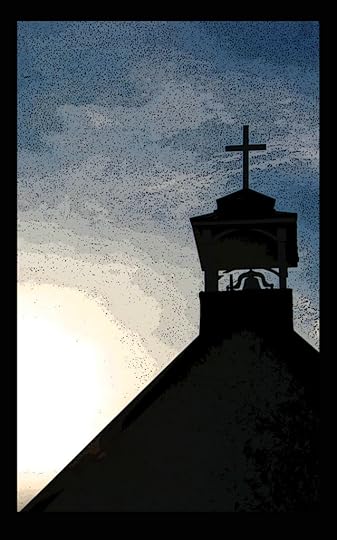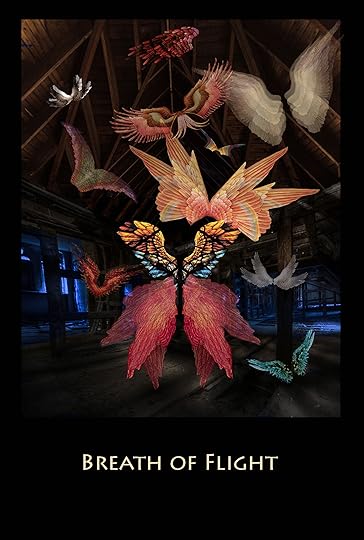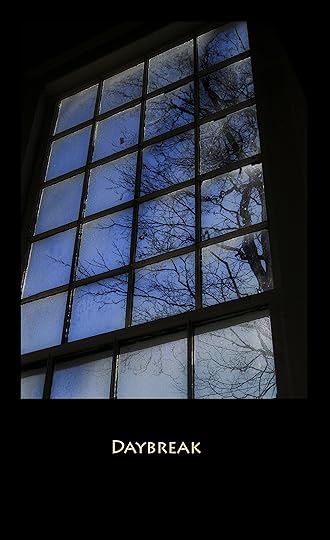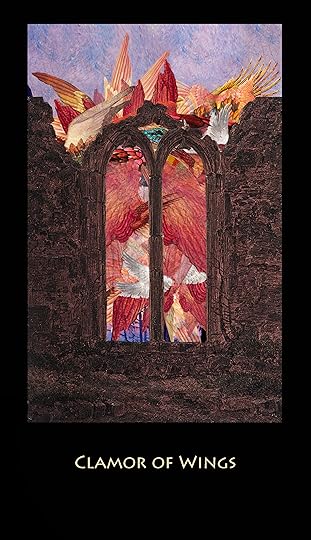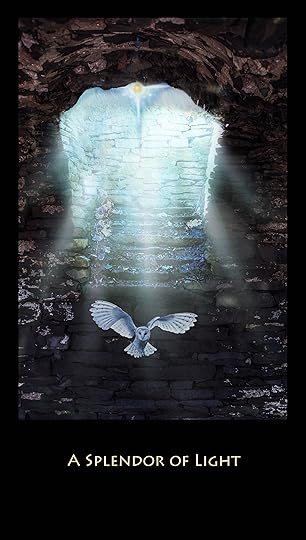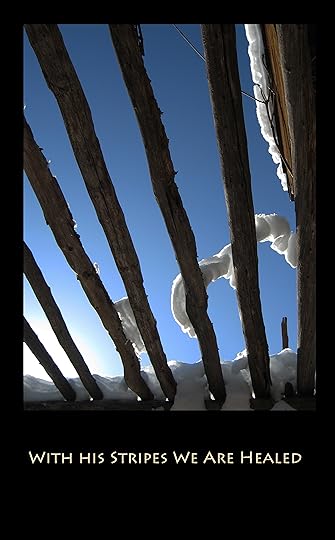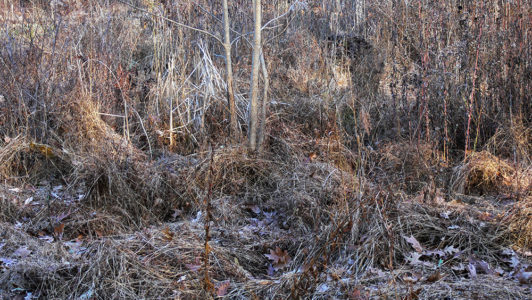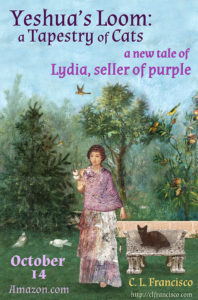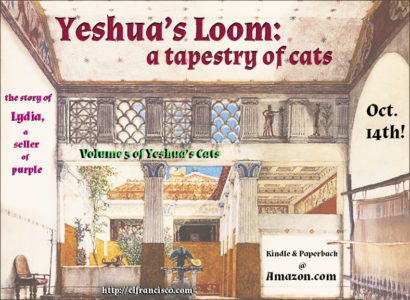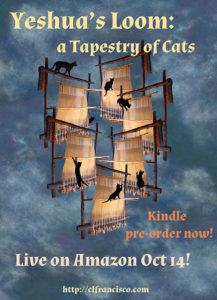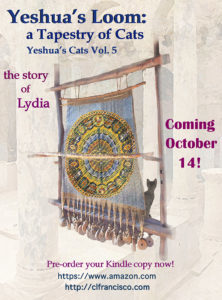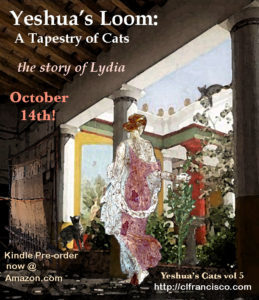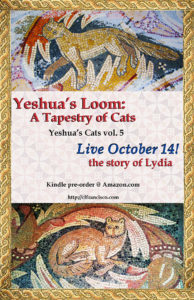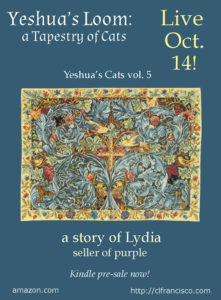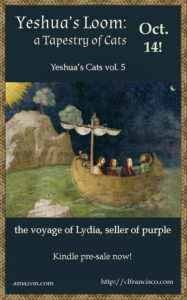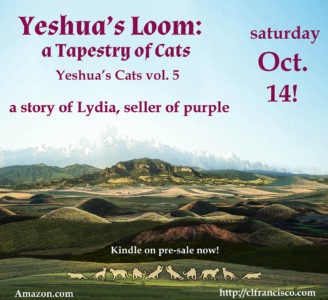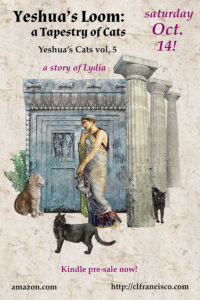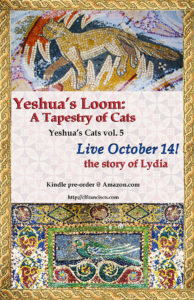C.L. Francisco's Blog, page 2
September 7, 2018
Moving Back into the Light
My apologies to you all for disappearing for so long! I’ve been battling a bizarre antibiotic-resistant infection picked up at a hospital last year, and have been unable to work for many months, but I’m slowly improving.
I’ve spend untold hours working on digital mosaics and computer busywork (since I haven’t had the wit to write), but at least I’ve accomplished one thing: I’ve finished transcribing my 1993 PhD dissertation and uploaded it to academia.edu. The title is:
Native American Shields, Old Symbols for a New Spiritual Quest in the Contemporary Women’s Movement
and if you’re interested, you can find it at:
https://www.academia.edu/37357137/
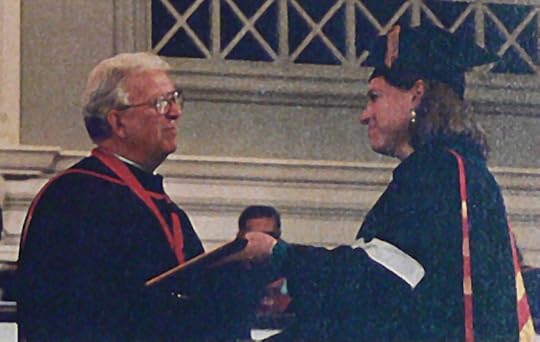 SBTS Graduation, 1993
SBTS Graduation, 1993
The dissertation was based on a summer’s on-site research with Euro-American women raised in the Church who were attending workshops on Native American spirituality–specifically to build shields. I interviewed 40 women about their reasons for leaving the Church and choosing a Native American spiritual path, using Marion Woodman’s revisions of Jungian psychology to analyze the interviews and shield images. Rosemary Radford Ruether and Meinrad Craighead provided critiques of the Church from within. I concluded with a my own Jungian critique of the Church–and suggestions for constructive change.
Although 25 years have passed, the issues are still current, as are the women’s responses to the pain they experienced in the Church. My own thoughts have grown and changed in the passing years, but I still find myself content to stand by what I wrote then. Below is an edited version of the dissertation’s final chapter. You can also find it here, where I’ve uploaded a number of the photos I took of the shield workshops (see drop-down menu under Native American Shields, above). Descriptions of the workshops are in the dissertation.
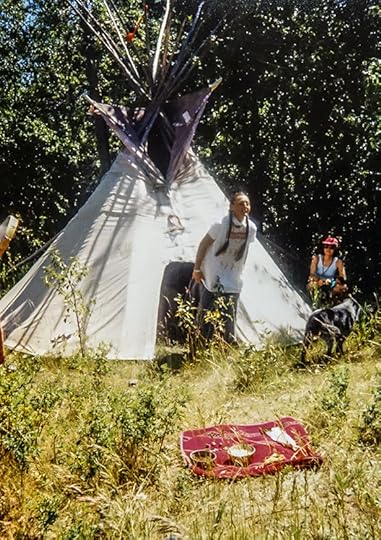 Brooke Medicine Eagle
Brooke Medicine Eagle

I dreamed I saw a giant tree, branches bare and cold, blown by the winds from place to place, rootless, tumbling across the plains. It stood precariously for a moment, and then fell with almost deliberate slowness, and in its fall it crushed beneath its branches the vast and delicate wings of a golden butterfly. As the butterfly died, its wings broke into brittle fragments and blew away like leaves in a winter wind. The great barren tree tumbled on, coming to rest at last, upright, supported by the strength of a living tree, caught and held by their intertwined branches.
Individuals are sometimes blessed with dreams that reach beyond the limits of their own lives into the heart of the reality that surrounds them. I believe the dream above to be such a gift. In it I felt as if I were seeing with the eyes of a woman like the one from my research, below, who experienced violence at the hands of the Church:
The Church kills dreams in women. It does it ruthlessly, without concern or love . . . Any woman who says she does not feel massive pain in this society and in the Church is living a lie, or she’s just burying it. It will surface, or it will kill her (“Leslie”).
The tree of my dream is a broken remnant of Meinrad Craighead’s “tree which lives at both ends.” The divine energy of the mind has been disconnected from the energy of the body, and the restless movement of masculine aggression has abandoned its roots in “God as mother of the entire fabric of creation.” The great barren institution of the Church rolls across the Earth, rootless, a truncated cross rather than a living tree, impersonal and uncaring in its destruction. Driven by the winds of arid masculinity, it crushes the fragile and beautiful butterfly of women’s hopes for transformation, scattering those hopes and women’s shattered lives to the winds, leaving women to search alone in the wilderness, without any visible paths, for the presence of the One in their lives.
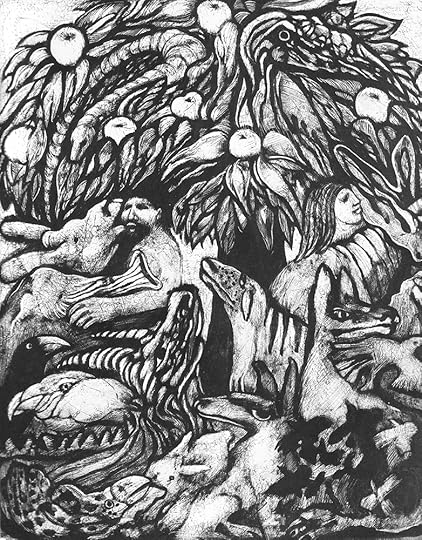 Meinrad Craighead, “Tree of Life” http://www.meinradcraighead.com/
Meinrad Craighead, “Tree of Life” http://www.meinradcraighead.com/Although the dream scene is a wintry one, still it holds out hope for the spring. The rootless tree is caught and held upright by the strength of a second tree firmly rooted in the Earth, its branches locking the barren tree in a complex embrace, pressing the barren trunk into its own contact with the Earth. In the terms of the previous chapter’s discussion, the living tree could symbolize the living Church—the flowering Church—wherever it is found, as well as other living traditions, such as the Native American, which draw deep sustenance from the fertile, feminine Earth. The grafting of such Earth-affirming energies into its life embodies the strongest hope for the reflowering of the Church.
The two questions asked at the beginning of the previous chapter hang heavy in the silence of the dream. Can the Church affirm the balanced symbolization of the Holy in images and rituals that do reverence to both the feminine and the masculine? Can the Church affirm women’s unique insights into the central mystery of the Christ? The answers are not yet clear. As the women interviewed emphasized in their responses, the first necessary step is the recognition of fully realized feminine wholeness in the Church and in the nature of the One. Without the presence of this feminine wholeness—not the depotentiated feminine of Christian tradition—neither reconciliation with the Church’s lost women nor the healing of its own wounds can be found.
Women seeking religious meaning through Native American spirituality seek the same essential treasure: their feminine Beingness, the feminine God-image in their hearts. At this time the Church does not offer its women any reliable access to the specifically feminine matrix of life. Without a structured means of access to the feminine within the Church, most women who are able to articulate their need will simply drift away, as those interviewed for this research have done—embittered, shattered, grieving, relieved, or simply abandoning an irrelevant piece of history, as each woman’s experience may be. In many cases they will take Jesus with them, alive in their hearts, but no longer related to the structures of the Church. But until they are able to affirm their essential femininity, they cannot encounter him as the bridegroom, the creative masculine within, the self-sacrificing guide to the feminine face of the One. And unless the Church offers pathways to the feminine within its own doctrines, few of these women will seek the bridegroom there.
Although the Church has treasured up the most significant life-preserving mystery of the Western world, it faces the catastrophic possibility that the life may be draining away from its symbols more rapidly than the Church can apply remedies. Dissatisfied women represent a movement away from the Church that has its echoes in rapidly diversifying New Age phenomena, the emerging men’s movement, and deep ecology. People speak glibly of a contemporary paradigm shift, not realizing what such a shift might mean. If a paradigm shift is primarily away from old patterns of reality, without containing within itself the balanced fullness of a new paradigm, disaster could result. The abandonment of traditional religious structures without firm alternatives to replace them would, as Jung saw clearly, bring catastrophic chaos to society.
Unless the Church can open itself to re-experience the numinous heart of its message in symbols that speak to the needs of the contemporary age, then it cannot offer itself to the world as the living body of Christ. The urgent need of the industrialized West is for wholeness within and without: the balancing of masculine and feminine and the sacred marriage that leads to authentic encounter with the face of the One manifested within each human being and in the whole of embodied reality. In the death, burial, and resurrection of Jesus Christ, the Church has preserved this life-engendering mystery, but it has severed it from the Earth, and from the balanced wholeness of humanity’s most authentic experience of the Holy.
It is futile for the Church to try to respond constructively to critiques of its institutional structures without seeking to change the spiritual and psychological bases of those structural problems. Most of the respondents in my research could not conceive of a Church free of the destructiveness they had experienced within its walls. I believe this inability to imagine ecclesiastical change is rooted primarily in despair over the Church’s doctrinal bases, and only secondarily in pain resulting from its institutional abuses. If the Church were to address Christian women’s despair at its ultimate source—in patriarchal formulations of the nature of deity and women’s insignificance in that masculine equation—the abuses could be transformed through a natural process of growth. Embrace of the feminine matrix of life could move in organic procession toward reverence for the embodied cosmos and awareness of its participation in the Holy.
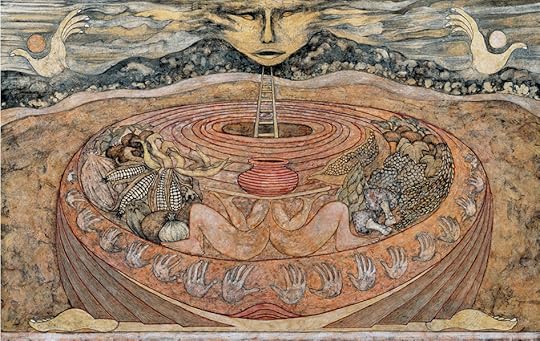 Meinrad Craighead, “Vessel” ( http://www.meinradcraighead.com/)
Meinrad Craighead, “Vessel” ( http://www.meinradcraighead.com/)Like Meinrad Craighead, each Christian woman who confronts her pain and chooses to remain in the Church faces a long and lonely struggle for possession of her soul. In a recent letter, one respondent still struggling to stay in the Church wrote the following:
I still believe in the Church, but I see my sister clergywomen worn down by carrying the pain of the churches and their own pain, and that of their sisters in the pews. I watch knowing that I will not go back until I can see a way to work in the middle of that pain . . . . I feel like the support and teachers I need are out there (based in other traditions], and that eventually I will find enough of a vision to reenter parish ministry (“Elizabeth”).
Singly, in small groups, and sometimes in community, such women are spinning strong and supple anchors for a new web of wholeness. Each weaves her own experiences into those of her sisters, connecting hopes and personal symbols into the outer ring of a spreading web, working steadily inward toward the center, in spite of personal storms and human destructiveness.
For a woman who has birthed a shield, that center may be held by the power of her shield’s vision, a reminder of a beckoning presence encountered in the wilderness or within her own soul. A shield captures a vision of wholeness, sometimes with the fullness of the masculine complementarity, sometimes emphasizing the feminine alone. Like any true symbol, a shield that touches a woman’s depths will continue to draw her in, pulling her forward toward the Self as long as she remains creatively engaged with her journey to the center it symbolizes.
Jungian psychology bids a woman turn inward to listen to the voice of her deepest Self, and, having heard, to manifest her experience in the physical world, through writing, artistic production, or dance. Native American wisdom pushes a woman out into the created world to experience the call of the One and to bring that encounter to physical expression through song, dance, ritual movement, and the creation of spiritually significant ritual objects. Native America meets Jungian psychology at the center of the mandala, at the midpoint of the flowering cross of Christ, where spirit incarnates in flesh, and flesh embodies spirit.
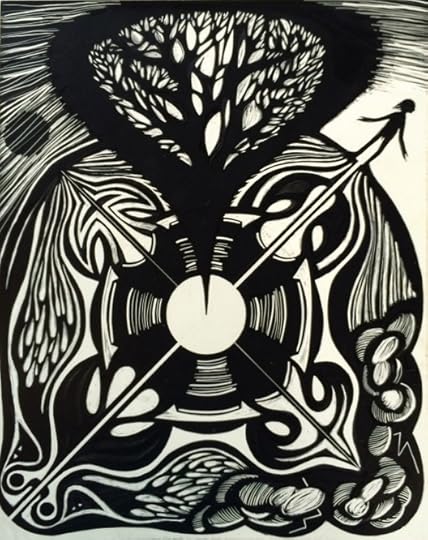 Meinrad Craighead, “Tree at the Crossroads”
Meinrad Craighead, “Tree at the Crossroads”http://www.meinradcraighead.com/
The Church must rediscover its true center in the ecstasy of immanence as well as transcendence if it is to embody the mystery of incarnation for the world. Women seeking participatory ritual in worship are reaching out with a true human instinct for experience of the wholeness of the One. The danger confronting them is that without the structured guidelines of proven traditional paths, they may fall into fascination with the psychic numinosity of destructive complexes—rather than with the creative pull of the Self.
Traditionally, the mysteries of the Church have facilitated experience of the One through such proven paths; however, the patriarchal bias of those mysteries has distorted human reality to such an extent that a critical mass of spiritual anguish has been achieved in the contemporary Western world. The paradigm is shifting, whether we will it or not. As the old consensus dissolves and social fabric unravels, American society is being split by those straining to cover themselves with the tatters of receding traditions and by those eager to push ahead into new revelation.
This split characterizes the contemporary American Church just as it characterized Mediterranean religious expression in the New Testament period. The cross of Christ, however, in its paradoxical fullness, fully supports neither of these opposing energies: it offers a point of reconciliation at its heart. It preserves the Law down to the last jot and tittle, while demanding new wineskins for the new wine of the Creative Spirit. It introduces a sword of separation into the most intimate fellowship, but draws all humanity to itself in love. It marks the intersection of proven and reliable old roads of tradition with the ongoing creative paths of the One, who is eternally making all things new. The essence of Christ’s message for the world is found in the paradoxical presence of both ancient wisdom and newness of life born from his passion and resurrection. The yoke of Christ to which the Church is called is a double one, harnessing polar opposites in creative tension: immanence with transcendence, masculine with feminine, flesh with spirit, light with dark, death with life.
As I opened my sacred circle to the surrounding forest at the completion of the vision quest that birthed the concluding chapters of this dissertation, the setting sun created a glowing shield from a previously unseen spider’s web. The hoop of the web was perfect in its roundness. The dying shaft of light that turned the web to flame illuminated only a few radiating strands, etching a golden cross against the shadowed trees, a cross that reached its arms out to touch the web’s circle at the four points of the medicine wheel. The web only glowed for a moment before the shaft of light was lost among the shadows, but it burned its image into my heart as a symbol of the longed-for wholeness of all visible and invisible being: the cross of Christ woven into the luminous heart of Creation.
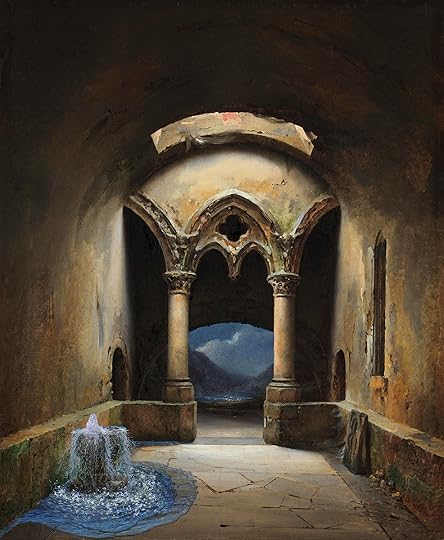 Seek, Find
Seek, FindSave
Save
Save
March 28, 2018
An Easter Photo Journal
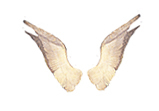
Is Christian faith fading into its own shadow?
Her wisdom drifting in the wind like winter leaves?
Springs of once life-giving faith lie blocked with rubble.
Abandoned churches loom over urban wastelands,
the glory of stained glass a relic of our dead past.
Nothing ingenious or new here.
Hardly au courant.
Yet didn’t Israel’s God once speak though Isaiah, saying,
“Look, I am doing a new thing! Can you not see it?”
A Creator doesn’t stop creating
any more than a writer stops writing
or an artist abandons her muse.
Perhaps we’re looking in the wrong places.
This Easter I’ve chosen to look in derelict buildings,
where even decay flowers into hope
and fleeting glimpses of beauty strike fire in my soul.
Take the time to look with me.
Meditate on Easter’s presence
in the down-trodden corners of our troubled world.

Thursday: Day Darkens
[image error] [image error] [image error] [image error] [image error]

Friday: Night Falls
[image error] [image error] [image error] [image error] [image error] [image error] [image error] [image error] [image error] [image error] [image error]
[image error] (figure adapted from an image by Remedios Varo)

Saturday: The Mourners
[image error] [image error] [image error] [image error] [image error]

Sunday: Life Returns
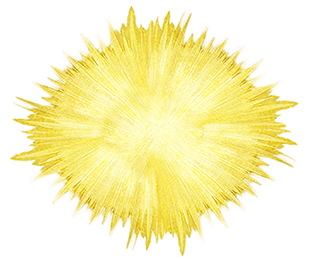
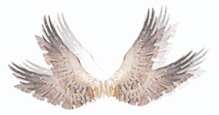
A blessed Easter to you all!
Save
Save
Save
Save
Save
Save
Save
Save
December 7, 2017
A Christmas Prayer
This year I find myself struggling against despair, but still praying. I don’t understand how we have gotten so muddled. What happened to “For God so loved the world”? Or “neither Jew nor Greek, male nor female”? “Let justice roll like a river”? or God’s desire is for us “to act justly, love mercy, and walk humbly before him”?
Here again is “A Christmas Prayer,” for the incomprehensibly deep divine love we celebrate at Christmas to fill all our hearts, and open our eyes to the wideness of God’s mercy, encompassing the whole of Creation.
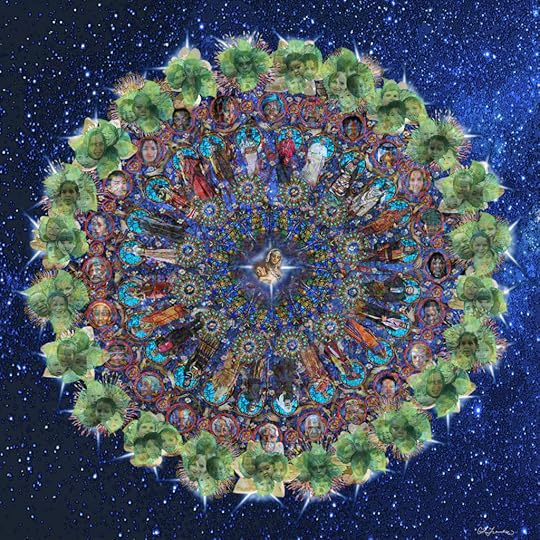
Save
December 1, 2017
A Season of Hope
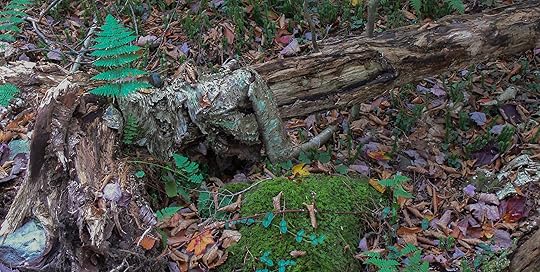 Fallen tree in the shape of a woman
Fallen tree in the shape of a woman
I’ve just released my first ever YouTube video, in response to what I see as part of America’s growing crisis of compassion: the appalling attacks made by Christians and non-Christians alike on the women and men brave enough to speak out of their own pain to try to halt the silent juggernaut of sexual abuse in our culture. The video is called Women’s Abuse Through a Forest Lens: #Metoo in the Voice of Trees. You can see it here. It speaks of sexual abuse as a tree might speak of human assaults on forests.
I chose to get involved with this divisive issue because it’s where I live: I’ve carried the scars of childhood sexual abuse through most of my life . . . although I’ve never spoken of it publicly before–partly because it’s intensely personal, and partly because of the kind of vilification sure to be aimed at those who do speak out.
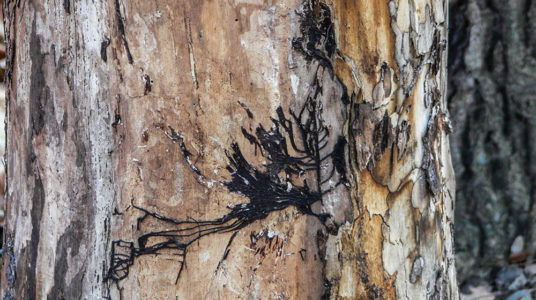 stripes
stripes
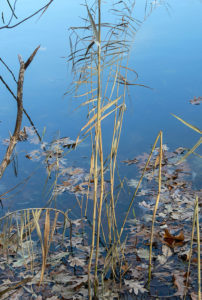 a bruised reed he will not break
a bruised reed he will not breakHow can it be that the old cliches still endure? She must have asked for it . . . it must be her fault . . . she tempted him . . . You know the words, although I hope you’ve never spoken them. How could people believe that human beings, male or female, would join their voices to the #metoo movement and invite such slander without cause?
No, the cause is there. It’s the scarlet elephant in the drawing room, the unspeakable secret, the sin shrouded in silence. It’s the enduring pain in the lives of men and women who’ve been sexually abused–pain as agonizing as any physical illness, and as destructive.
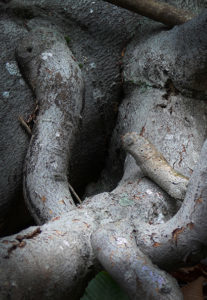 nothing hidden that will not be disclosed
nothing hidden that will not be disclosedOne piece of bedrock wisdom offered to people healing from sexual abuse is to bring their memories into the light and speak them aloud, refusing to accept the shame abusers ladle out to silence them. The voices flooding our media from #metoo are doing just that: coming into the light and speaking their truth. Why are the nation’s Christians not standing with them? “There is nothing hidden that will not be disclosed, and nothing concealed that will not be brought out into the open . . .” Even now light is shining into a place of cruel darkness. Why do we not join our light to theirs?
I’m sure that the #metoo phenomenon has its fakes and charlatans, but “babies” and “baths” come to mind here. More damning to me are the Christian voices that admit abuse is a reality but dismiss its importance. In their eyes we who suffer from such things are Other (lesser) humans: women, children, LGBT, non-white, poor. We don’t matter.
But even if we don’t matter to many of America’s powerful, we matter to the One Creator. We are among “the least of these” who look to our leaders with hope, and whose well-being the living Christ counts as his own.
 not a sparrow falls
not a sparrow falls
You can see the images from Through a Forest Lens below. The video is posted on YouTube.
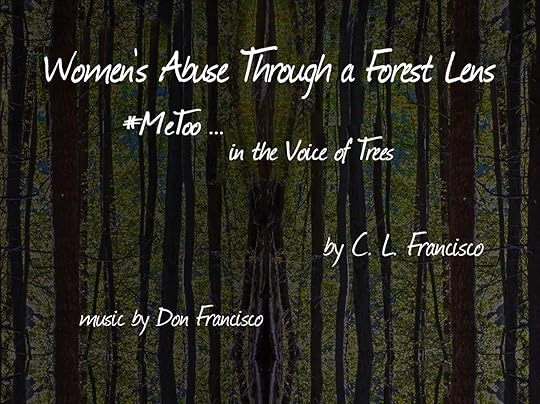
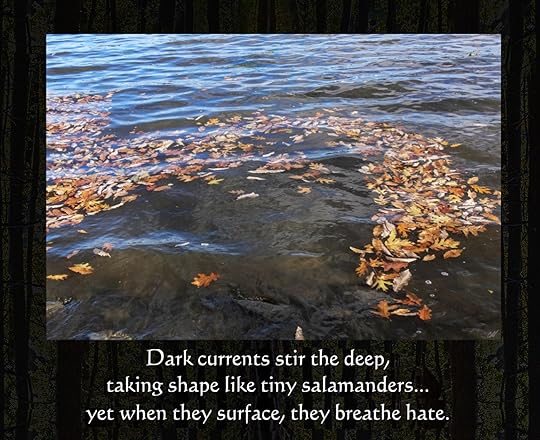
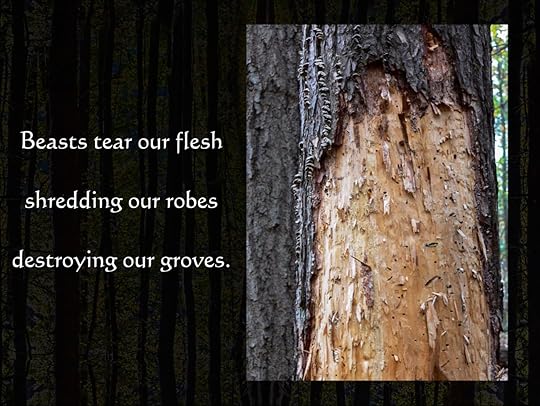
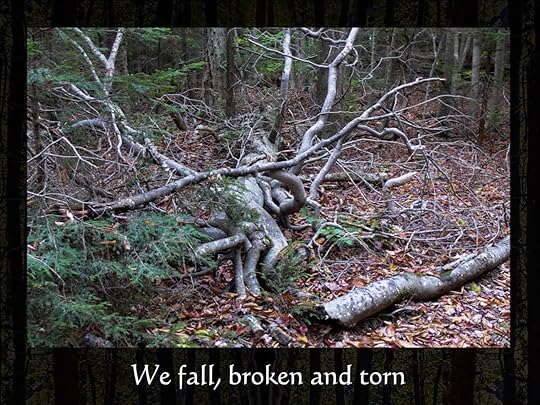
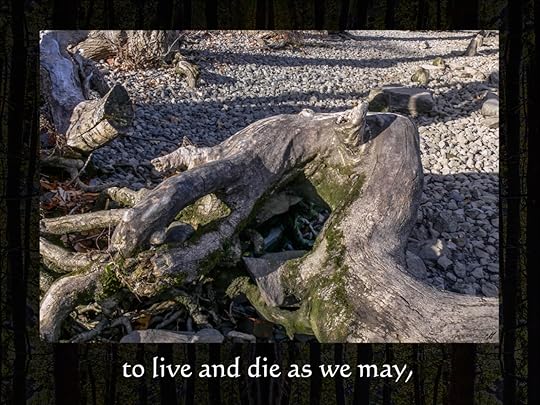
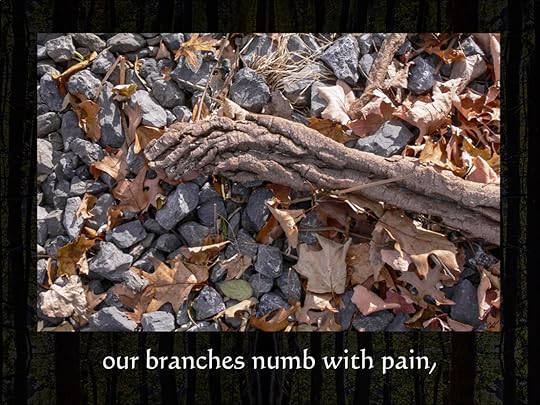
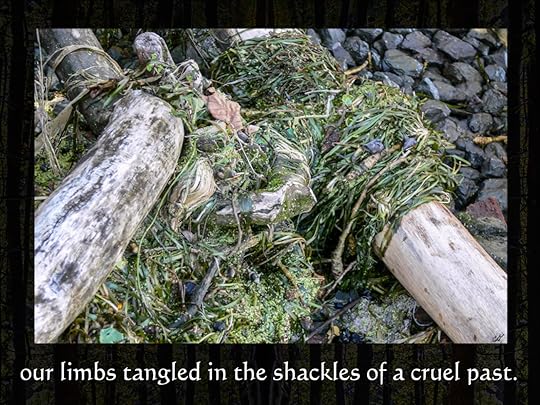
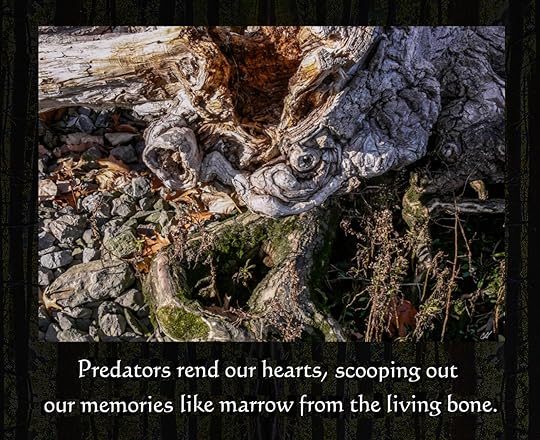
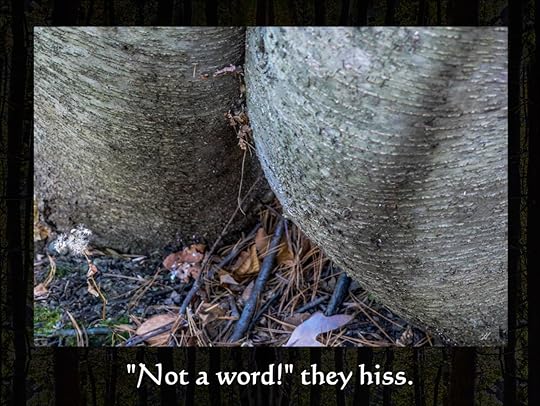
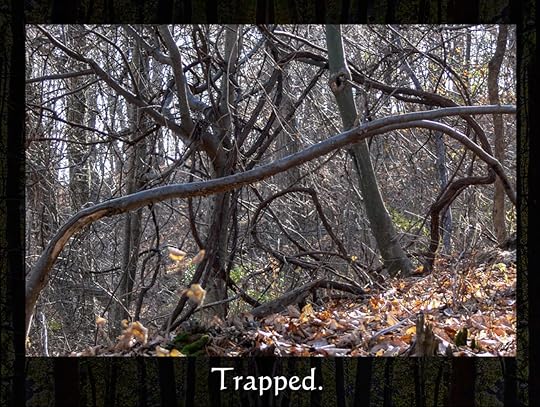
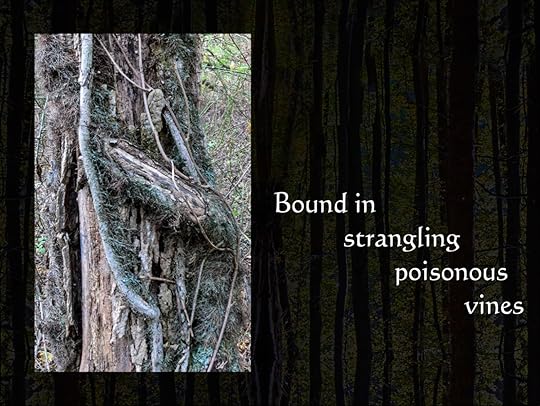
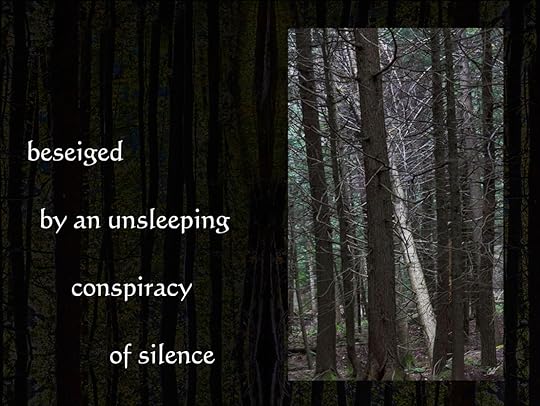
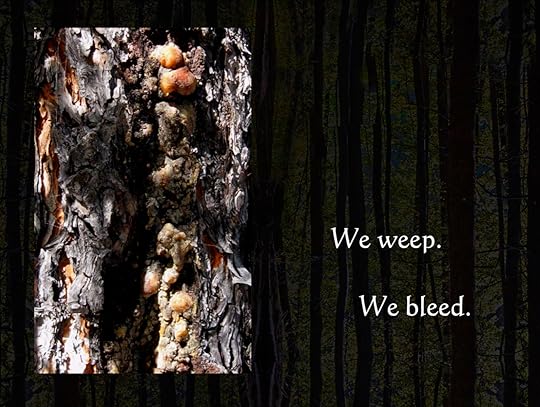
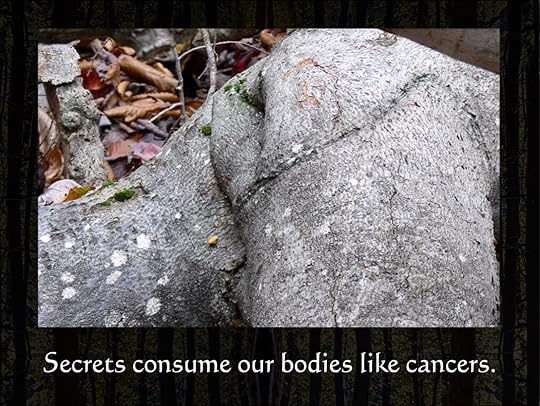
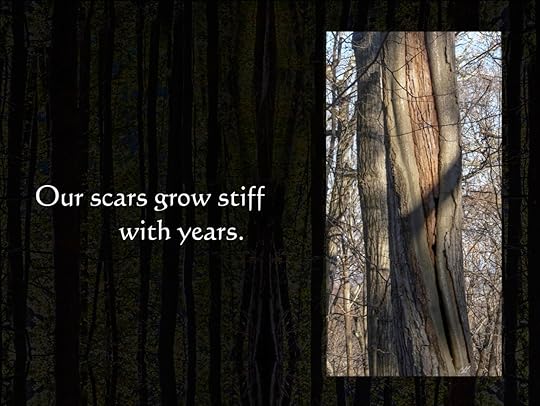
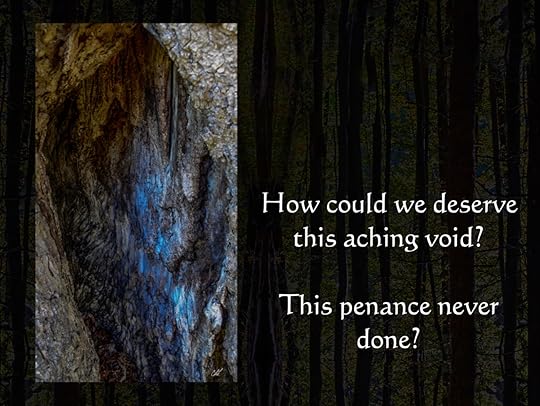
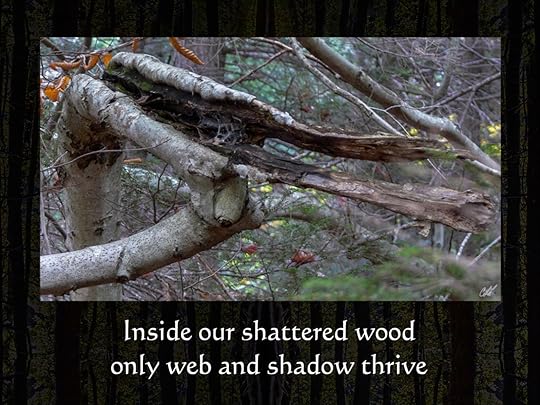
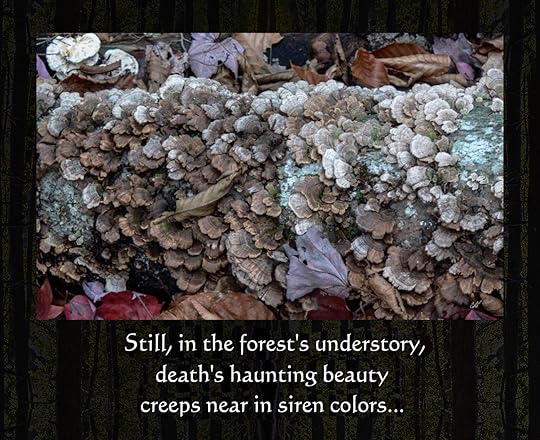
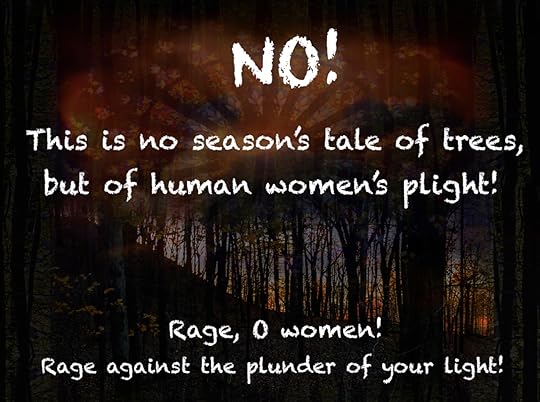
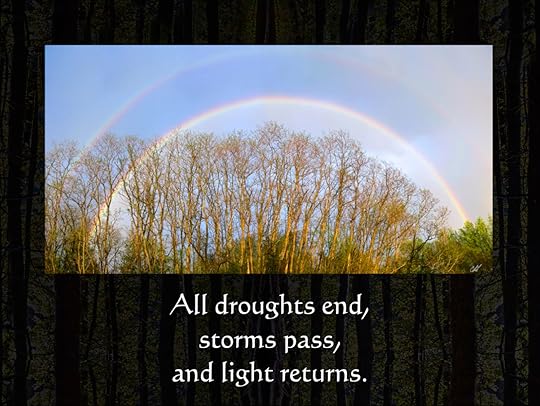
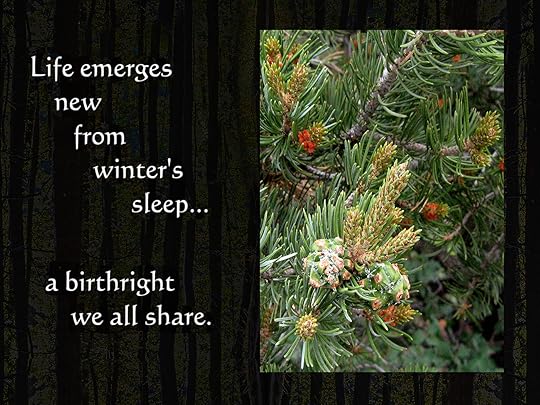
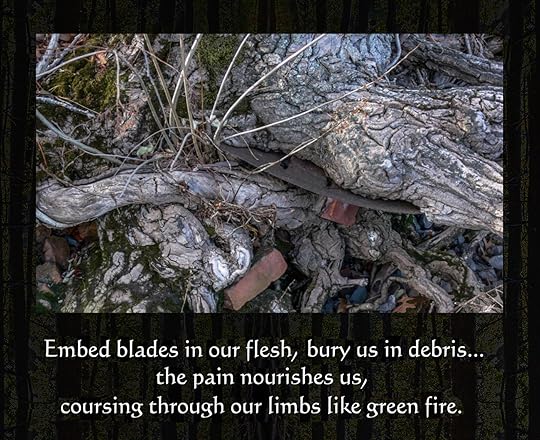
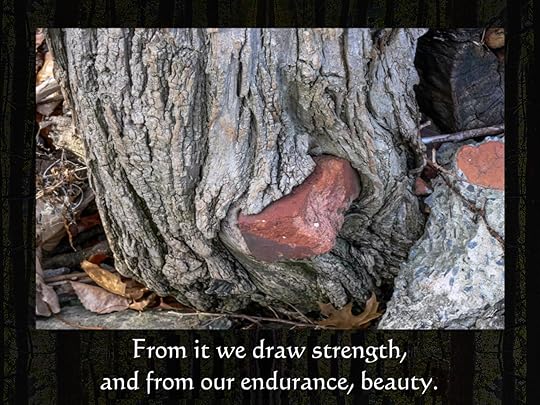
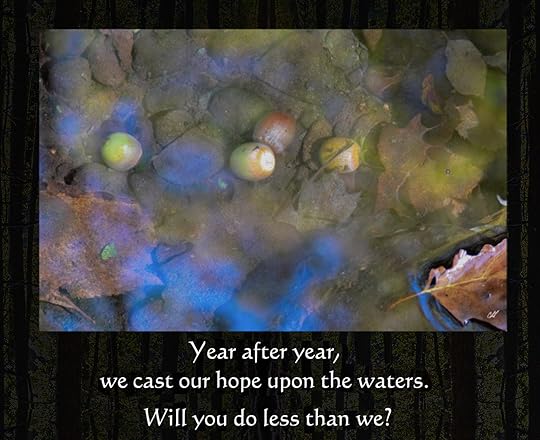
Save
Save
Save
Save
Save
Save
Save
Save
Save
Save
Save
November 11, 2017
Yeshua’s Cats E-Books $.99!
This weekend, in time for Thanksgiving,
all Yeshua’s Cats e-books $.99!
Fri, 11/17, 8 am thru Mon, 11/20, 8 am (EST)
Regular e-book price $5.99!
Buy them all now for only $.99 each!
The Gospel According to Yeshua’s Cat
A Cat Out of Egypt
The Cats of Rekem
Cat Born to the Purple
Yeshua’s Loom
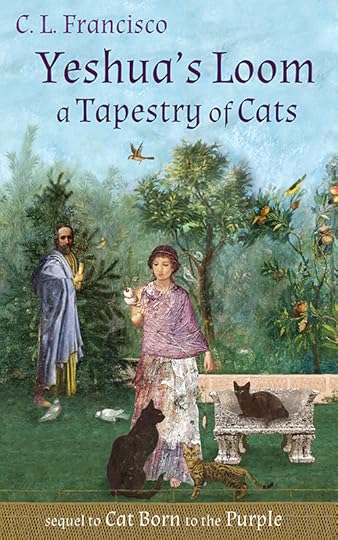
Save
Save
November 2, 2017
An Autumn Yeshua’s Cats Break
I found myself more than usually burnt out after finishing the launch of Yeshua’s Loom, so I took an autumn break: hiking and photographing the changing forests in upstate NY. Luckily my brother Don came to visit, so we photographed the woods together!
One of my readers said that my photos looked as if I were trying to find windows into the One’s Spirit in the world. I mentioned that to Don, who said that was exactly what he did! Spending deep time with someone who’s known you all your life is incredibly nourishing. Here are some of my photos–taken by the writer at rest, with her brother. Click on individual photos to see a larger size.
The first album is from Ferncliff Nature Reserve in Duchess County:
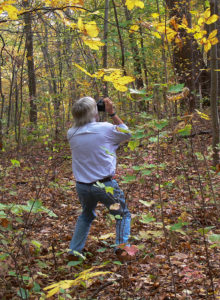

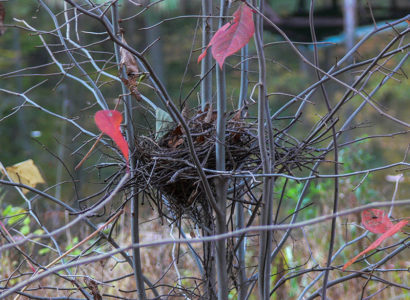
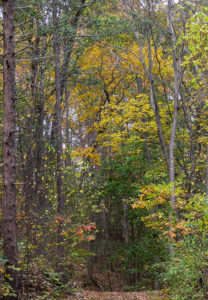



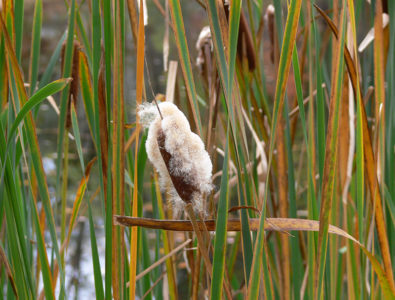

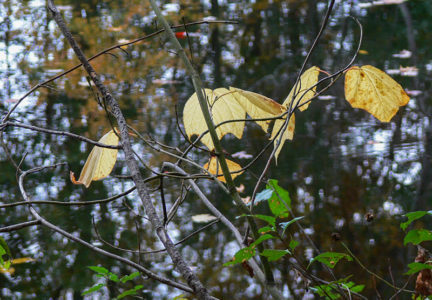

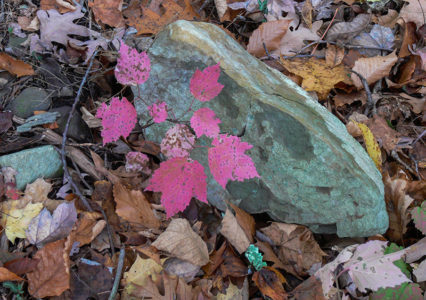
The second album is from the Devil’s Peak Trail in the Indian Head Wilderness area above Woodstock:
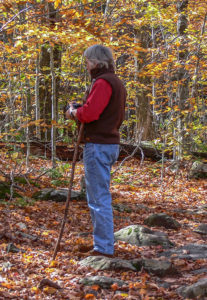
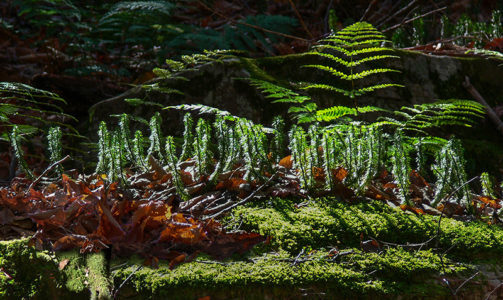
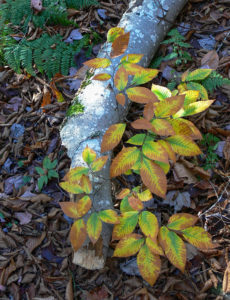
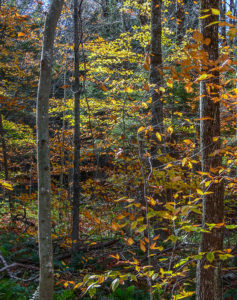
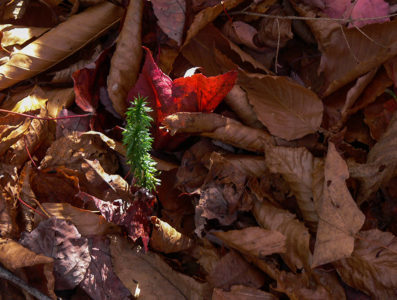
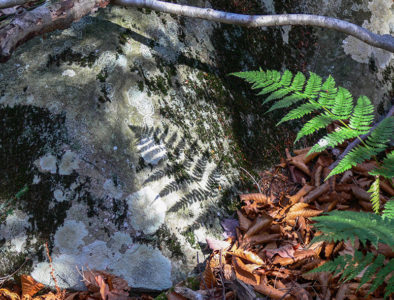

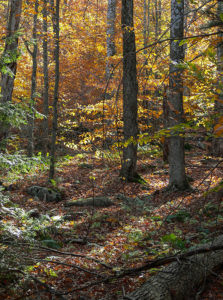
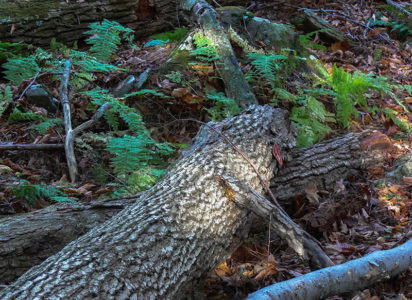
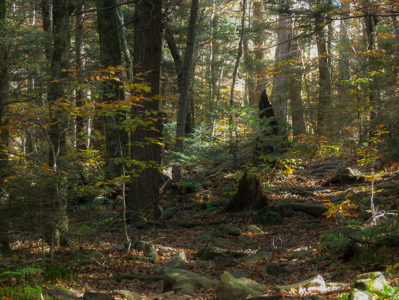

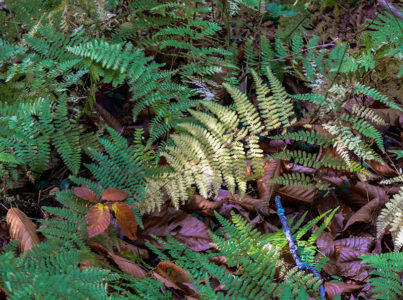
This third album is from a very windy day along the Hudson River:
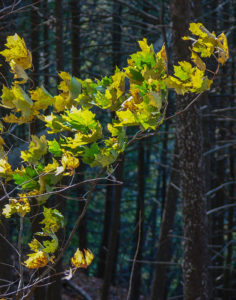
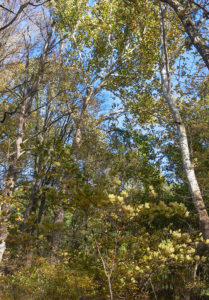
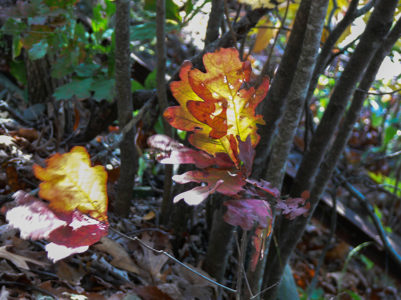
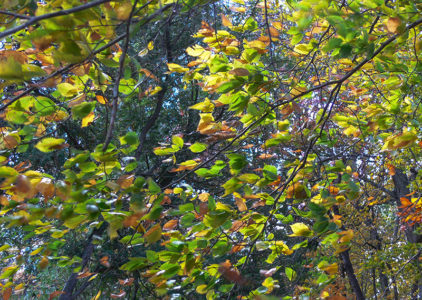
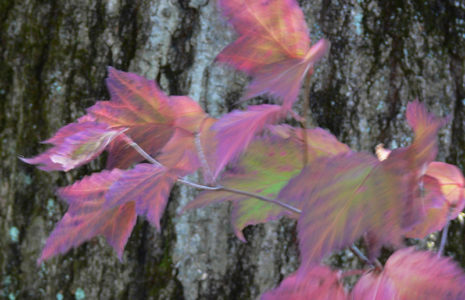
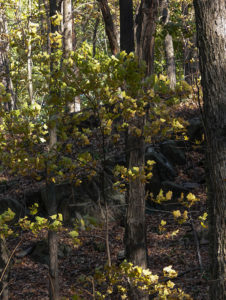
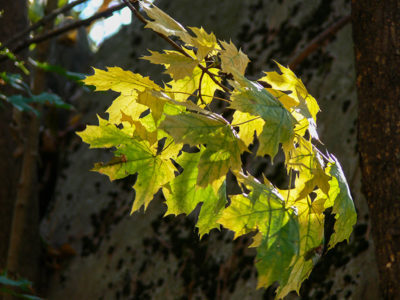
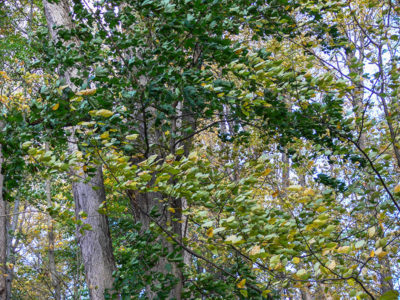
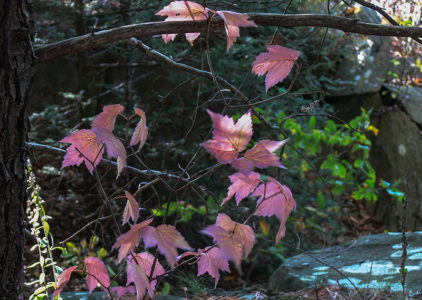


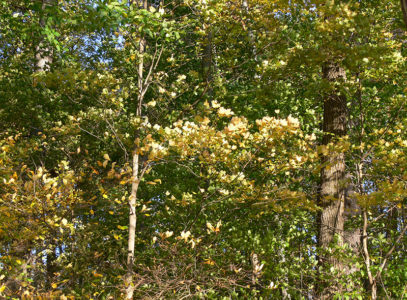
And finally, the Vanderbilt Estate on Halloween, after I took Don to the airport:


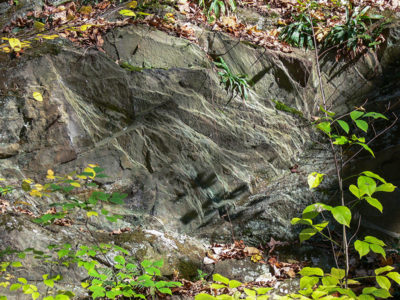
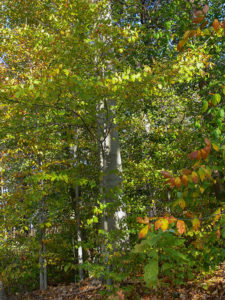
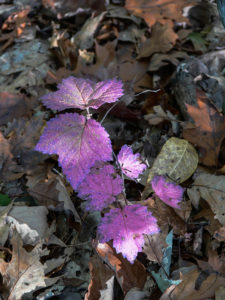
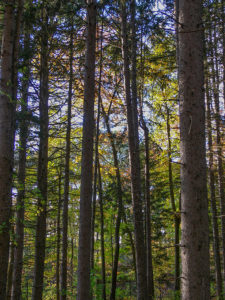
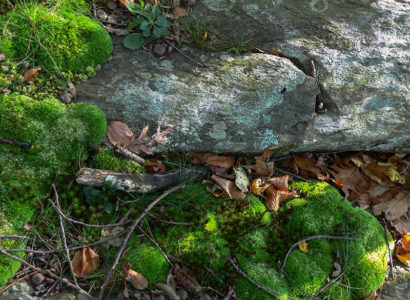
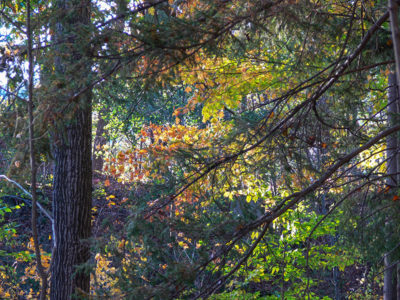
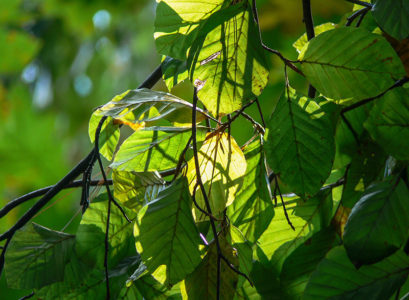
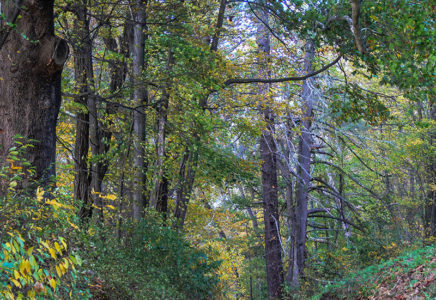


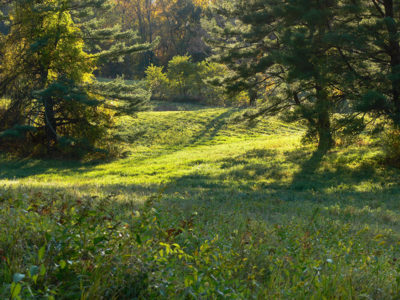
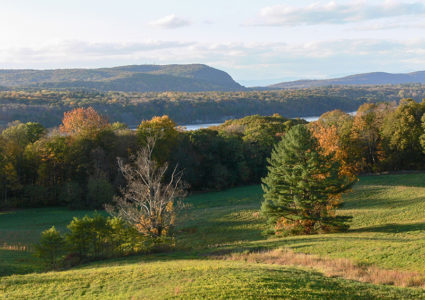
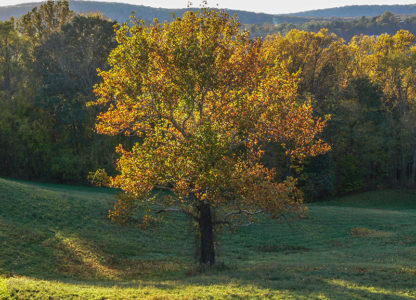
October 5, 2017
Yeshua’s Loom scheduled for release this week!
I decided to start a gallery of all the ads I’m creating for the the release of Yeshua’s Loom: A Tapestry of Cats. I hope you’ll feel inspired!
I’ll add to them as I go along . . .
Save
Save
Save
Save
Save
Save
Save
Save
Save
Save
Save
Yeshua’s Loom scheduled for release next week!
I decided to start a gallery of all the ads I’m creating for the the release of Yeshua’s Loom: A Tapestry of Cats. I hope you’ll feel inspired!
I’ll add to them as I go along . . .
Save
Save
October 1, 2017
Pre-order Yeshua’s Loom Kindle now!
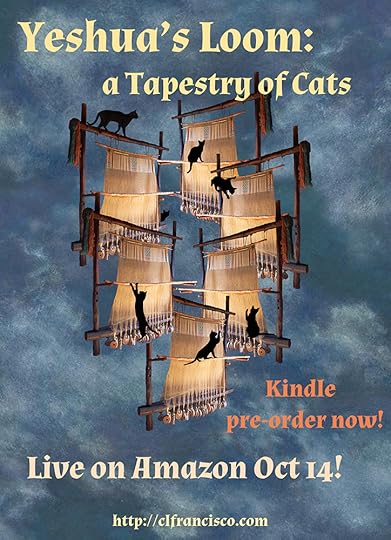
Paperback & Kindle versions live on October 14
and reviews are coming in–here are some excerpts:
“A worthy sequel to Cat Born to the Purple! Francisco’s books have a lovely poetic style and a gentle spirituality that enlivens and inspires even if the reader does not share the writer’s Christian perspective. Her cats are distinctly cats, with thoroughly feline perspectives. Each location, each emotion, each happening is described with a vivid sensuality and an emotional richness that puts the reader directly into the action. The theology is generous, humane, and intelligent, with plenty of room for cats!“
“Highly recommended! A powerful story told by sentient cats of the woman who becomes Lydia, seller of purple, and offers the Apostle Paul wisdom destined to change the future of Christianity. Francisco’s evocative, lyrical descriptions bring to life a cat’s-eye view of the feelings, sights, and sounds of biblical times. Loom’s unique perspective—blending philosophy, spirituality, and astute observations on human faith—will intrigue any reader who enjoys thought-provoking accounts of biblical history.”

“Francisco has woven a fascinating tapestry in Yeshua’s Loom with deftness and sensitivity. Animal lovers (and especially cat lovers) will respect the way she has made her cats a part of the divine creation and given them hidden wisdom. As a device for sharing the life of Jesus and his disciples, the feline observations are both charming and intellectually satisfying. A singularly unique fictional series which works well as fantasy fiction and Christian parable!”

Save
Save
Save
August 12, 2017
5th Yeshua’s Cats book due out in October!
Coming October 15th!
Yeshua’s Loom: A Tapestry of Cats is complete and entering the editing and review process! The target release date is October 15th, so mark your calendars!
Yeshua’s Loom is the fifth volume in the Yeshua’s Cats series and the conclusion of Cat Born to the Purple—as well as a continuation of the story of Paul the apostle begun in The Cats of Rekem. In Yeshua’s Loom, Aeliana, the gifted young weaver Yeshua healed in Yeshua’s Cat, journeys to Anatolia, where she marries the Roman merchant Chariton (from Purple), and moves with him to Thyateira, in the province of Lydia. Only later, when she flees to Philippi and changes her name to Lydia of Thyateira, does she enter history through the few cryptic lines in The Acts of the Apostles that link her with Paul. Yeshua’s Loom’s concluding chapters describe a relationship that could easily have grown up between these two brilliant but dissimilar followers of Yeshua when their paths cross briefly in Philippi.
Three cats take turns as guides and narrators: Aeliana’s cat Purple, who accompanies her throughout her travels, the powerful male Nightfire, who is drawn to Chariton by visionary dreams, and Yeshua’s own cat Mari (Wind on Water). Mari joins the family for several years, partly as a gift of wisdom from Yeshua, and partly because Maryam of Magdala must leave Mari behind when she journeys abroad. Aeliana’s continued struggle to open her heart and allow the One to heal her old wounds brings her and her family into compelling encounters with both Yeshua and the dark evil stalking their paths.
Only after many years of tragedy and healing does Aeliana become the wise woman called “Lydia,” who meets Paul by a small stream near Philippi and changes the course of the Christian faith.

Want to read a sample? Go here to read the first three chapters!
Save
Save
Save
Save
Save
Save
Save


